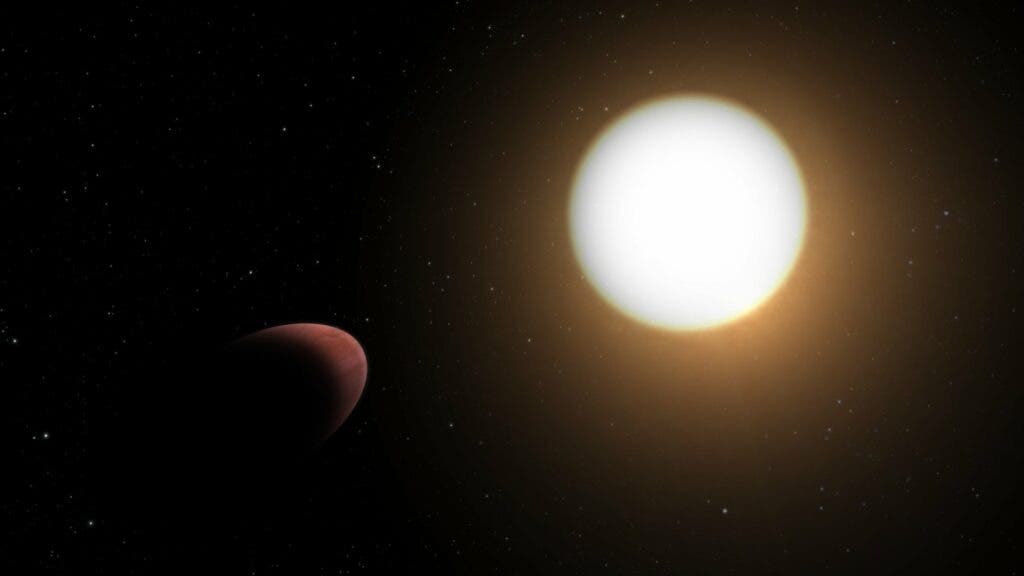Most planets in this universe are spherical, and for good reason. Forces of gravity generally pull equally from all sides, from the center to the edges like the spokes of a bicycle wheel. This makes the overall shape of a planet a sphere. Some can be more spherical than others (Earth is flattened at the poles and bulges at the equator) depending on their distance from the sun and speed of rotation, but generally all are alike.
However, the European Space Agency’s exoplanet mission Characterizing Exoplanets Satellite (Cheops) has revealed a planet with a deformed shape more like that of a rugby ball than a sphere. This planet, coined WASP-103b and which has a density 1.5 times that of Jupiter, is located in the Hercules constellation approximately 1,225 light-years away from our oblate spheroid home.
“It’s incredible that Cheops was actually able to reveal this tiny deformation,” says Jacques Laskar of Paris Observatory, Université Paris Sciences et Lettres, and co-author of the research. “This is the first time such analysis has been made, and we can hope that observing over a longer time interval will strengthen this observation and lead to a better knowledge of the planet’s internal structure.”
The deformation is caused by gravitational tugs from WASP-103, its host star. The planet lies a mere 1.8 million miles away from WASP-103, which is both hotter and 1.5 times larger than our Sun (by comparison, Earth is around 93 million miles from the Sun). Astronomers have suspected that such close proximity would cause monumental tides, but up until now they haven’t been able to measure them.
Using new data from Cheops, which measures exoplanet transits — the dip in light caused when a planet passes in front of its star from our point of view — along with data already obtained by the Hubble Space Telescope and Spitzer Space Telescope, researchers were able to detect how tidal forces deform the exoplanet from a usual sphere into the rugby ball shape.
The team was able to utilize the transit light curve of WASP-103b to obtain a boundary—the Love number—that determines how mass is distributed within a planet. Understanding how mass is distributed can reveal details on the internal structure of the planet.
“The resistance of a material to being deformed depends on its composition,” explains Susana Barros of Instituto de Astrofísica e Ciências do Espaço and University of Porto, Portugal, and lead author of the research. “For example, here on Earth we have tides due to the Moon and the sun but we can only see tides in the oceans. The rocky part doesn’t move that much. By measuring how much the planet is deformed we can tell how much of it is rocky, gaseous or water.”
When they calculated the Love number for WASP-103b, the researchers discovered an exoplanet larger than our Solar System’s largest inhabitant, which suggested that the internal structure is similar, despite the exoplanet having almost twice the radius.
“In principle, we would expect a planet with 1.5 times the mass of the Jupiter to be roughly the same size, so WASP-103b must be very inflated due to heating from its star and maybe other mechanisms,” Susana said. “If we can confirm the details of its internal structure with future observations maybe we could better understand what makes it so inflated. Knowing the size of the core of this exoplanet will also be important to better understand how it formed.”
While it’s fairly certain that WASP-103b isn’t the only deformed planet out there, it is the most conclusive evidence to date. Researchers hope that further work, including from the James Webb Space Telescope, can provide more certainty on where those might lie within the vast universe.
The research was published in Astronomy & Astrophysics.



